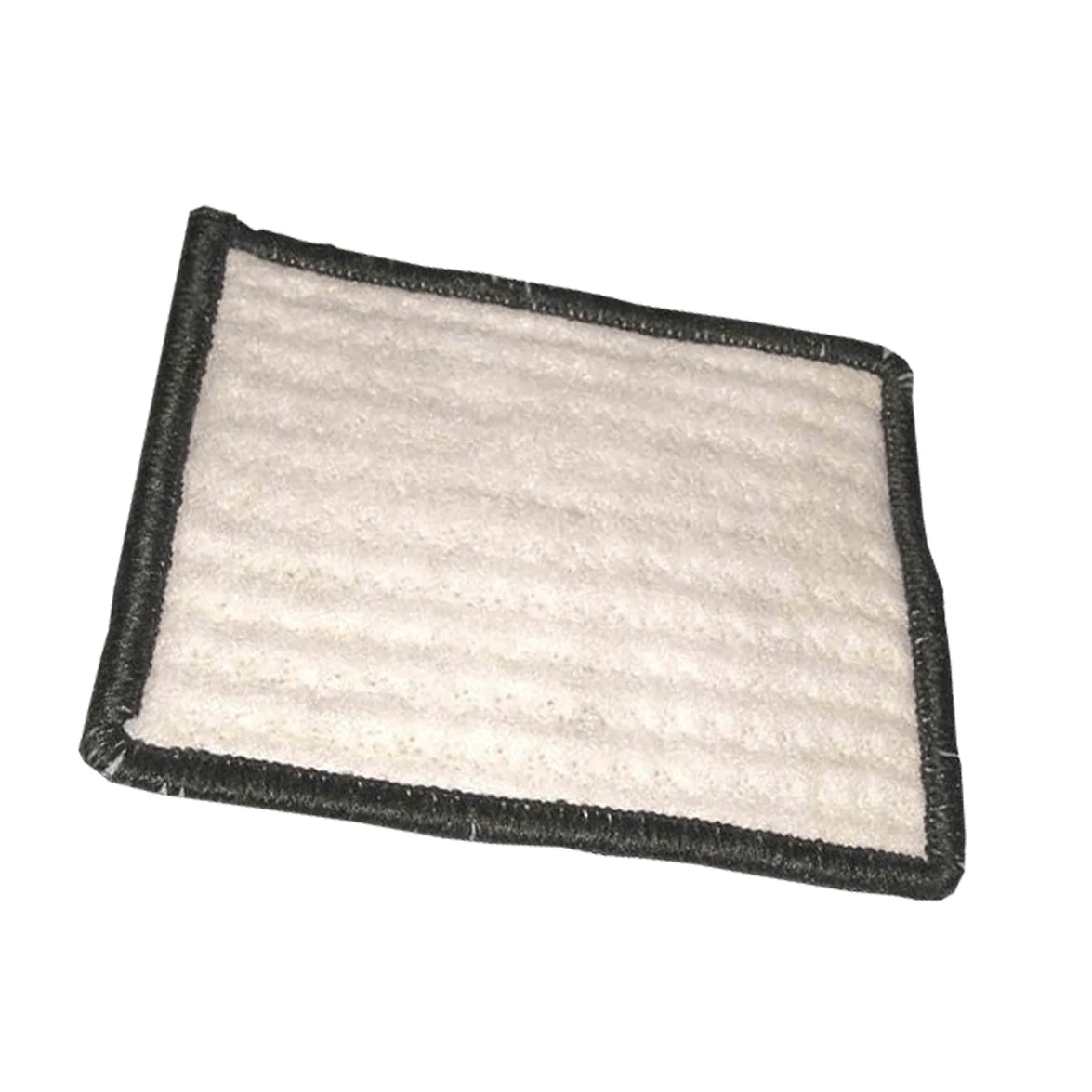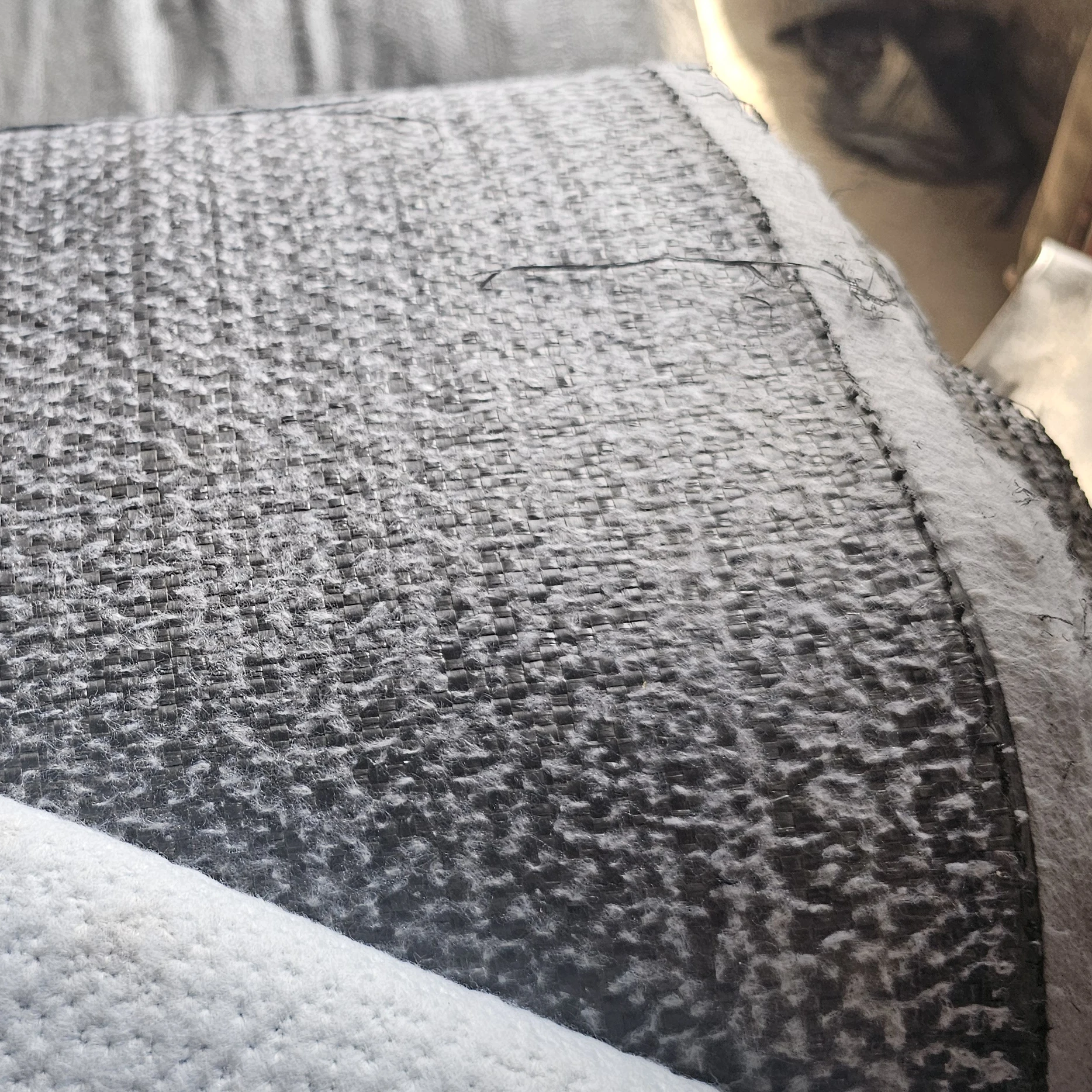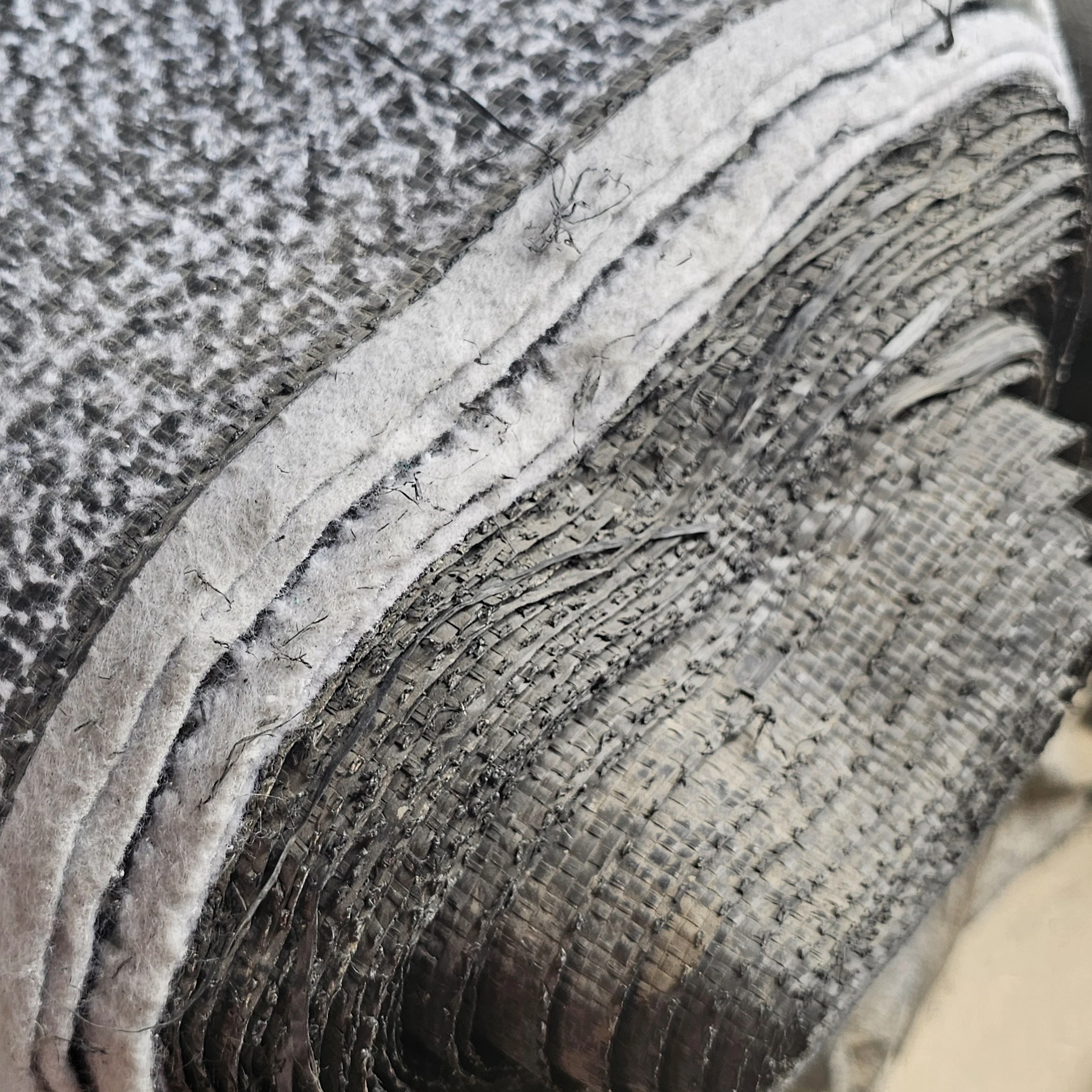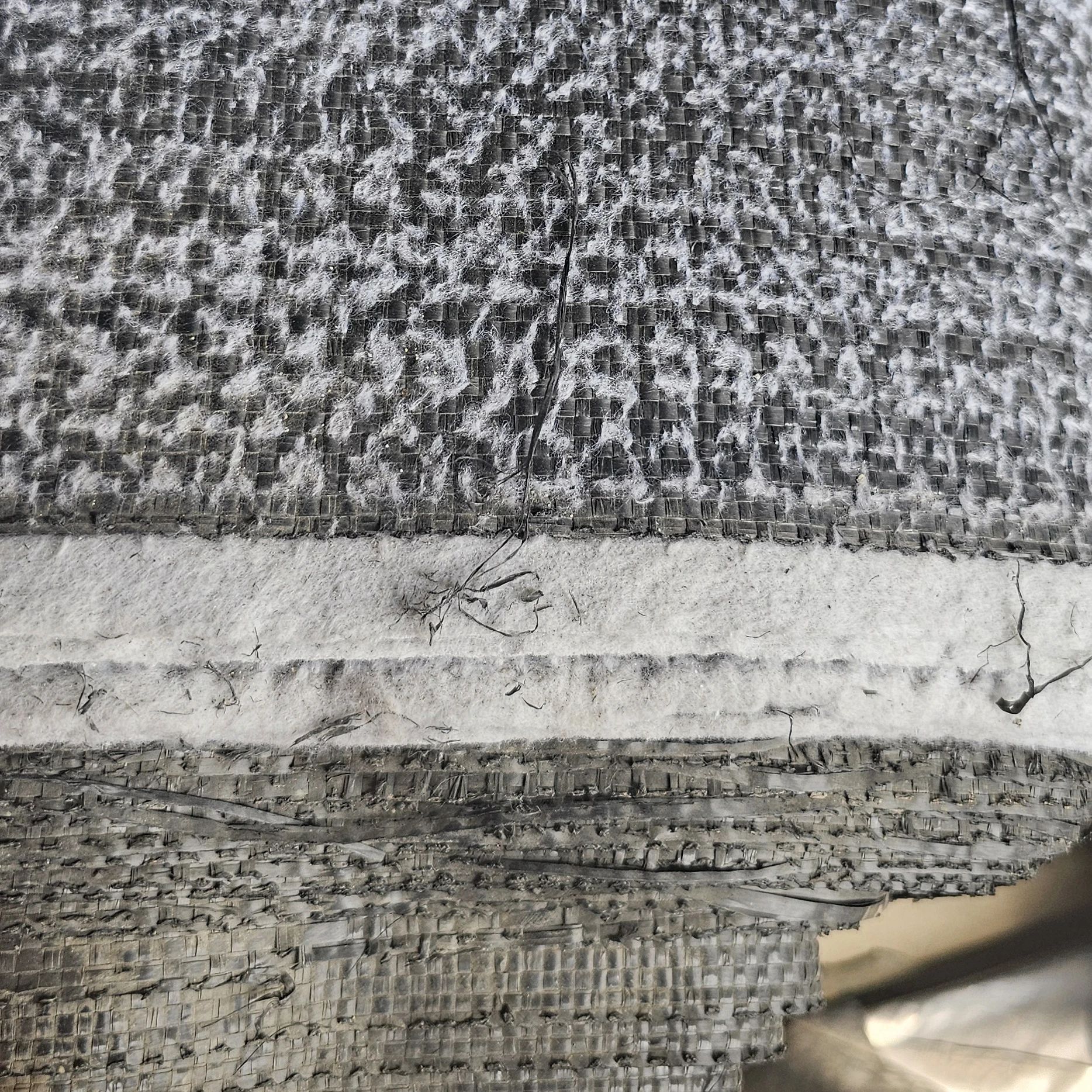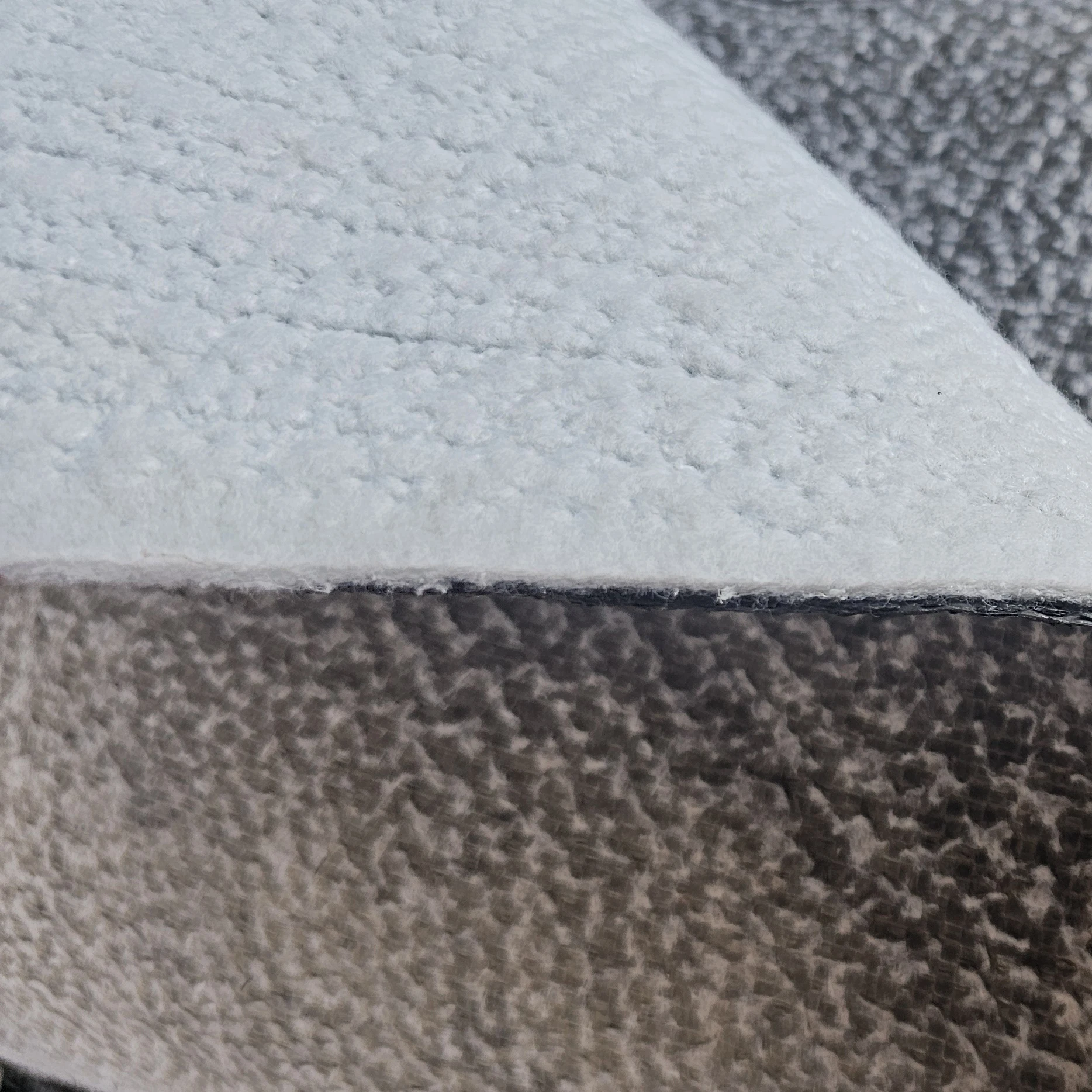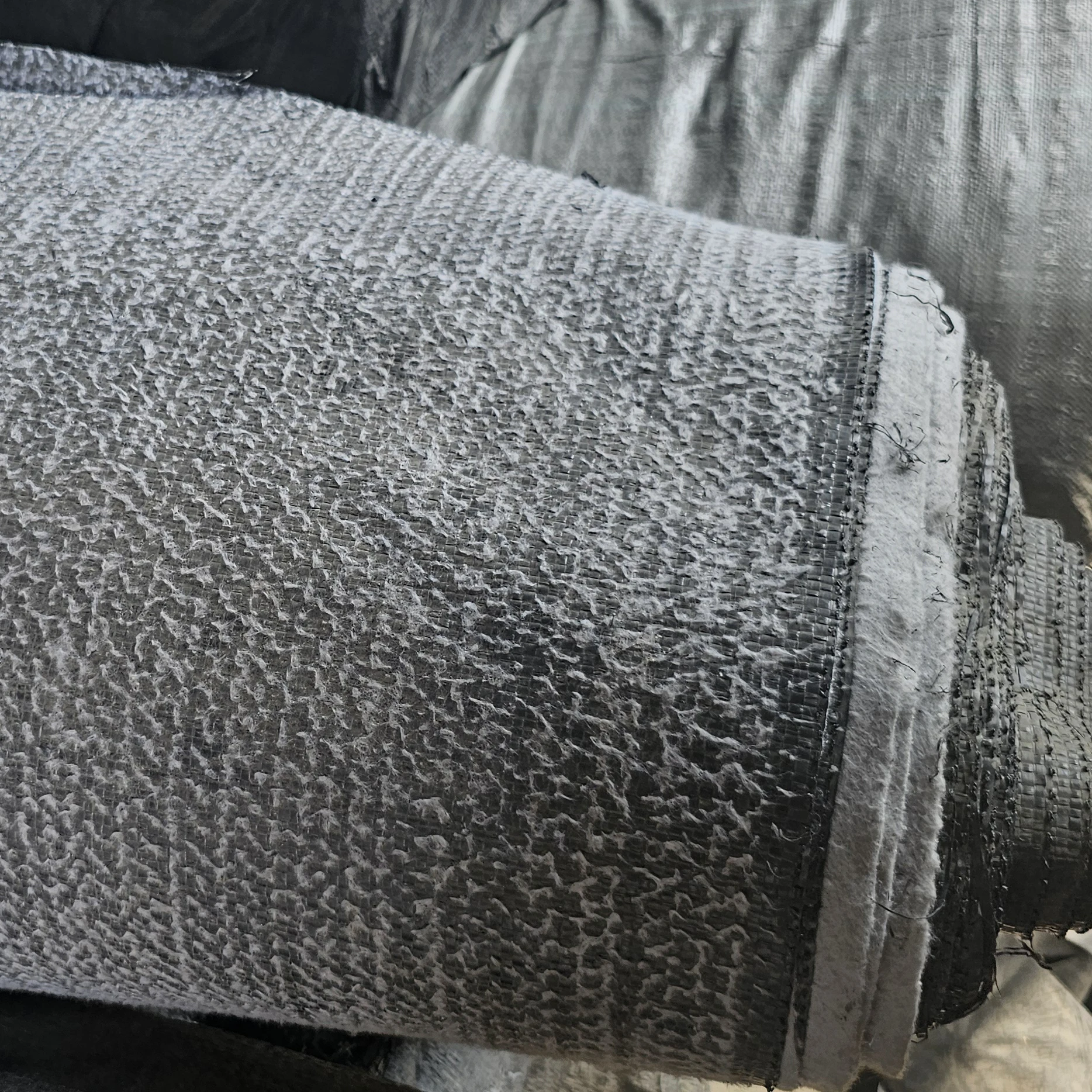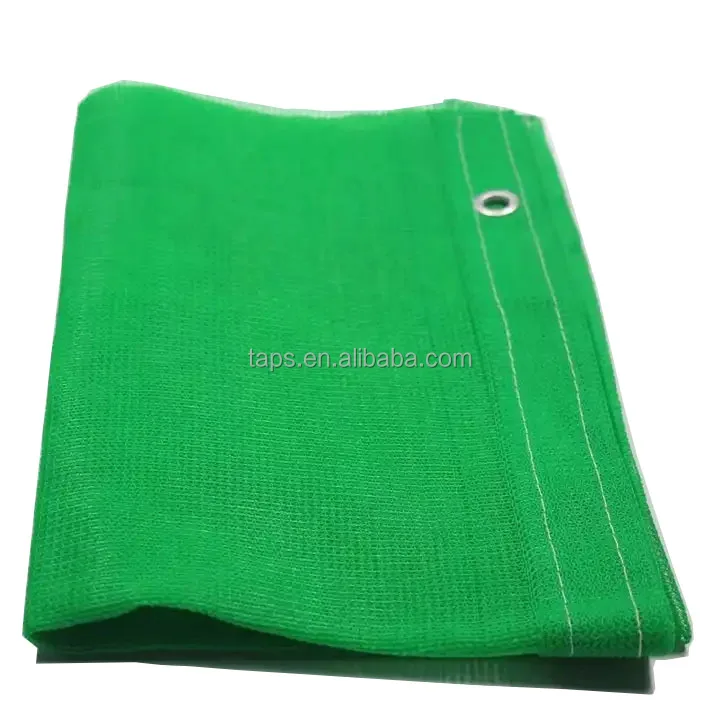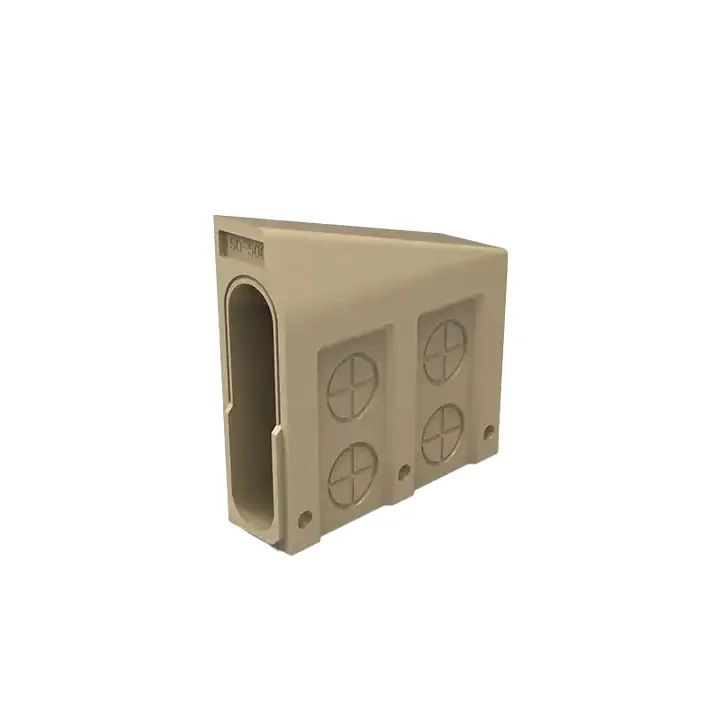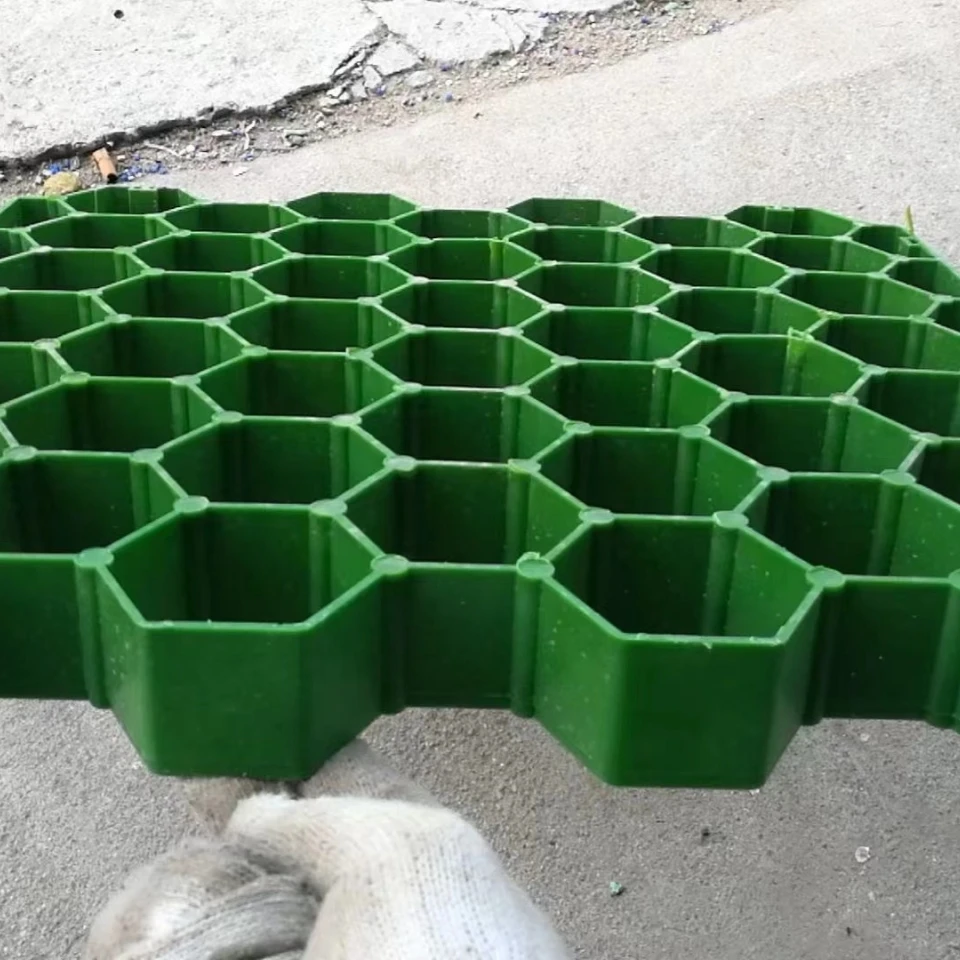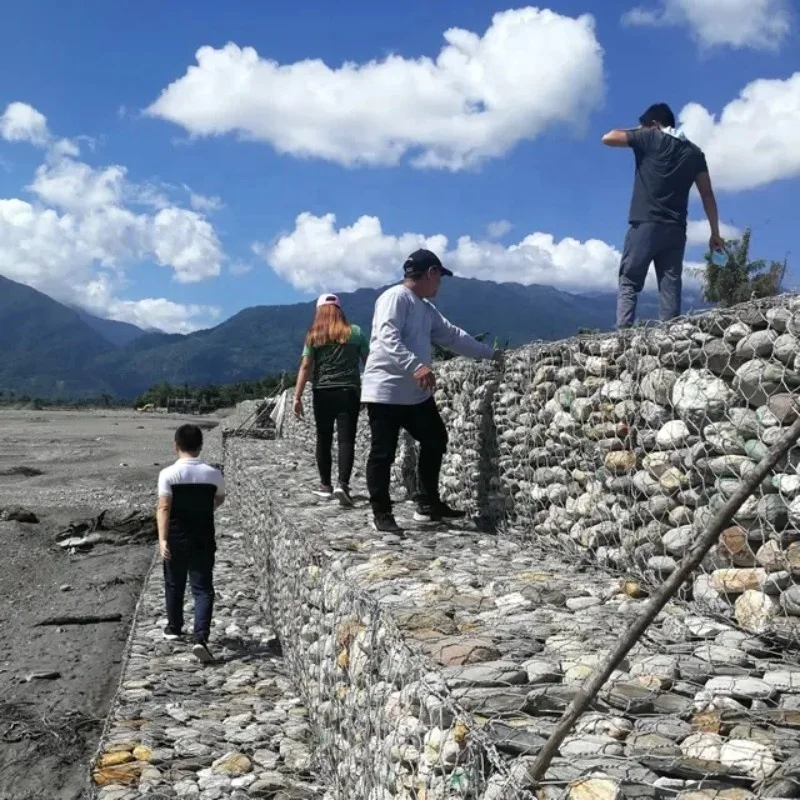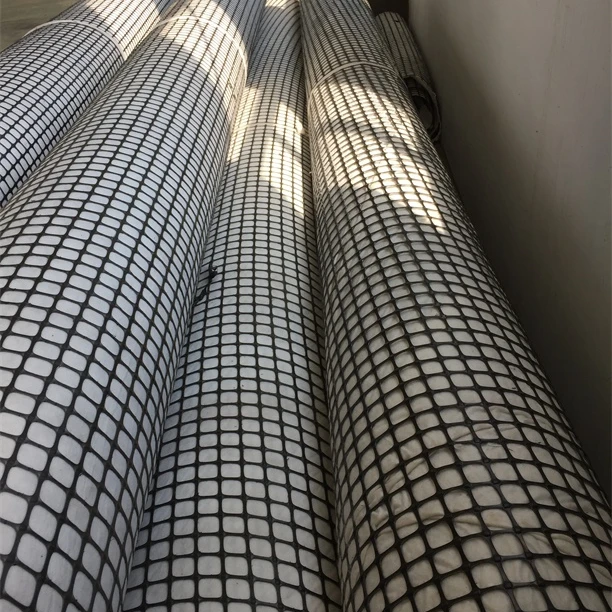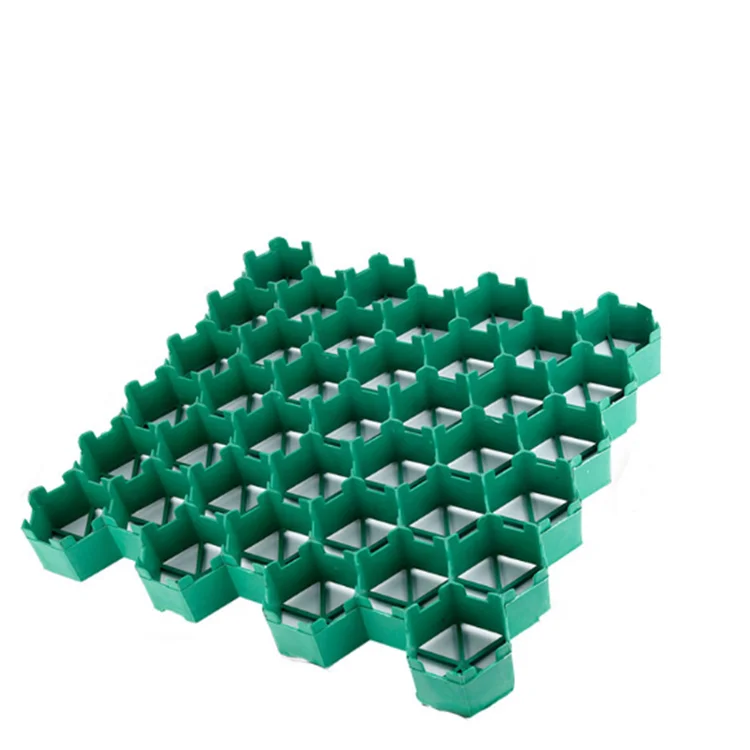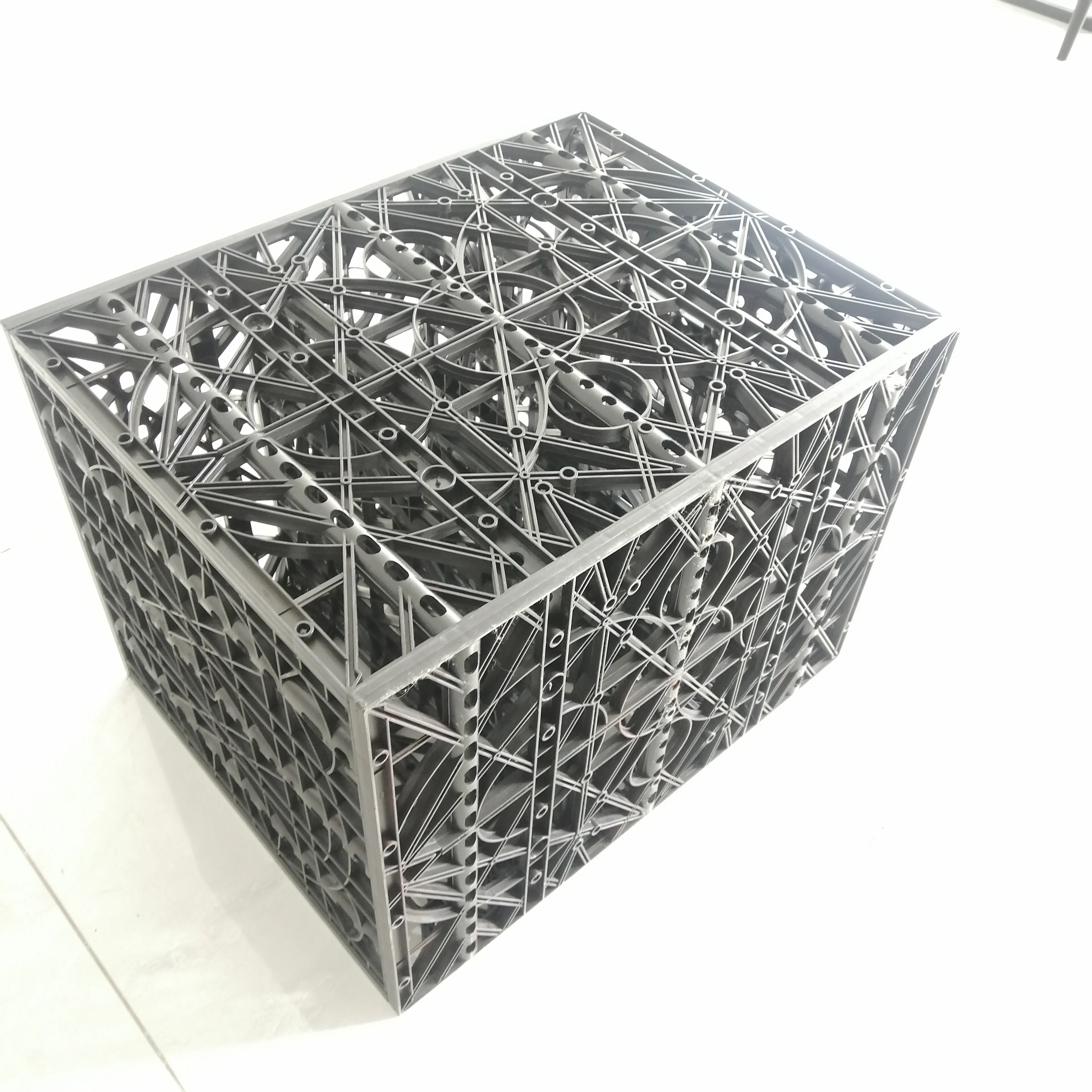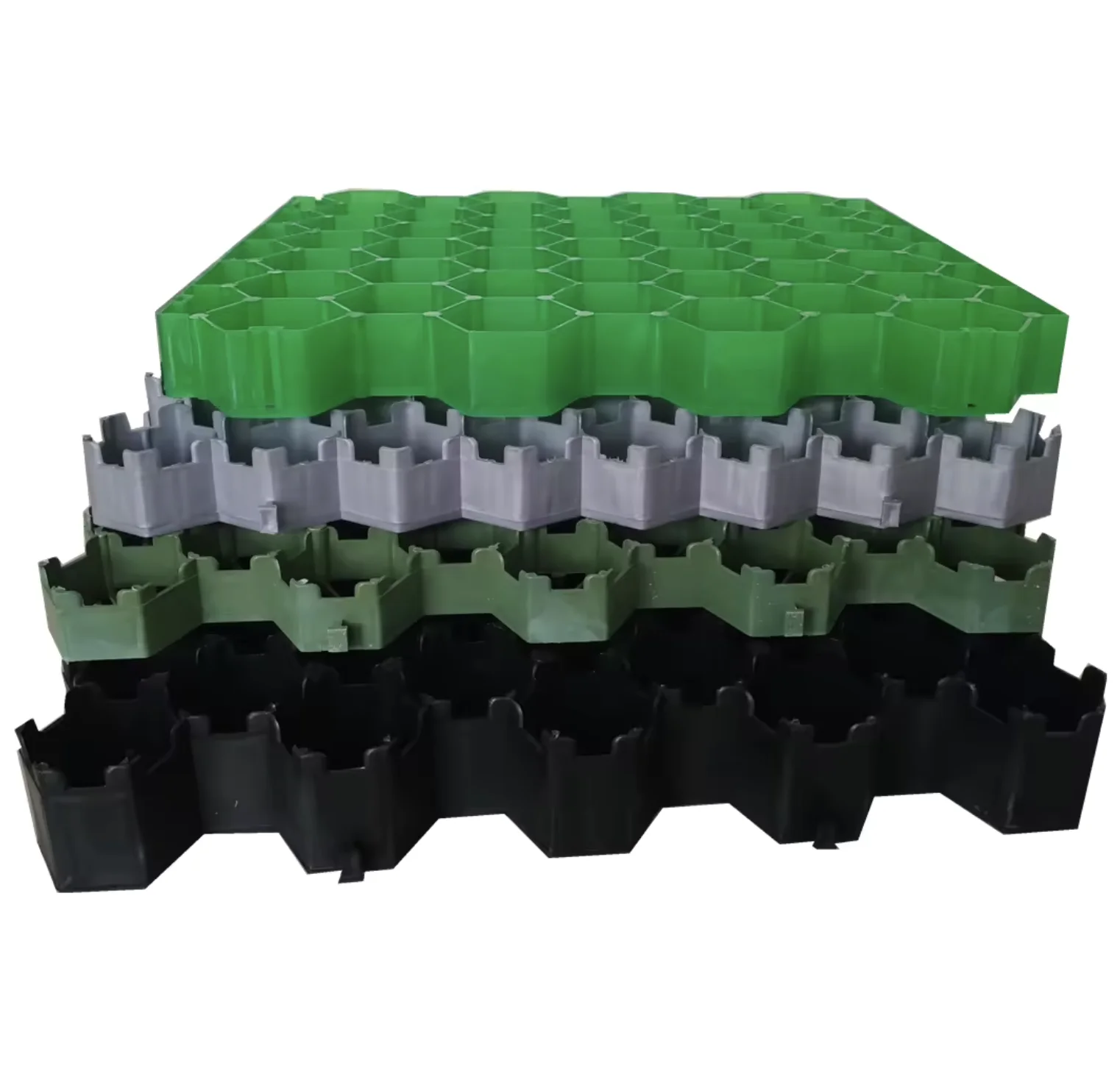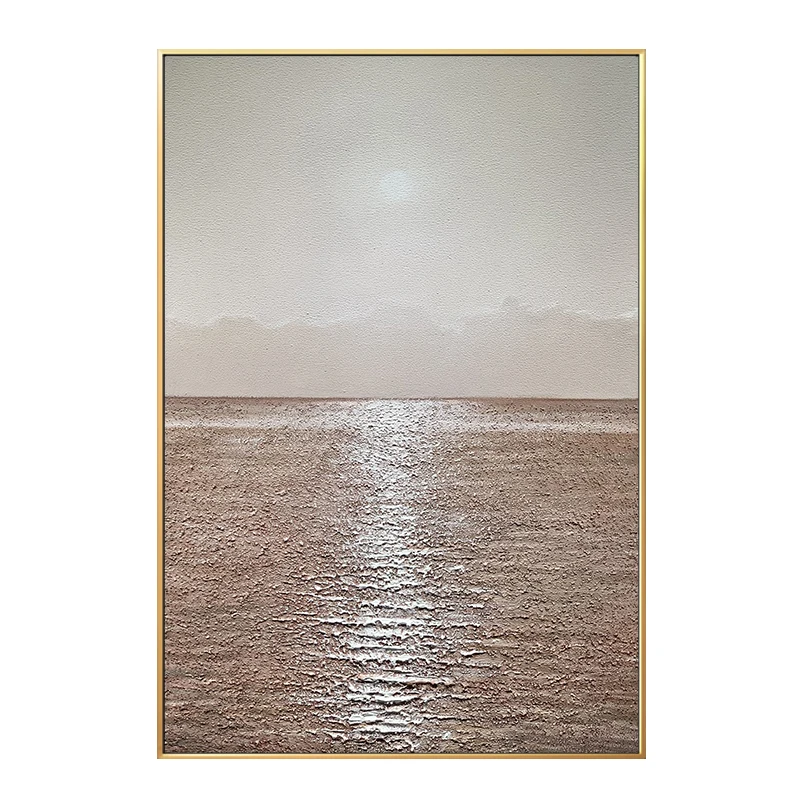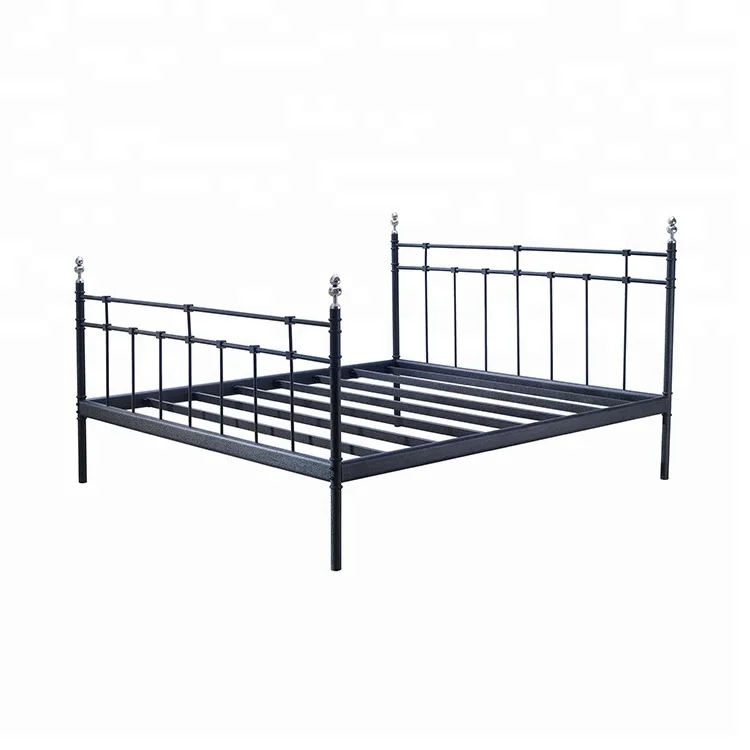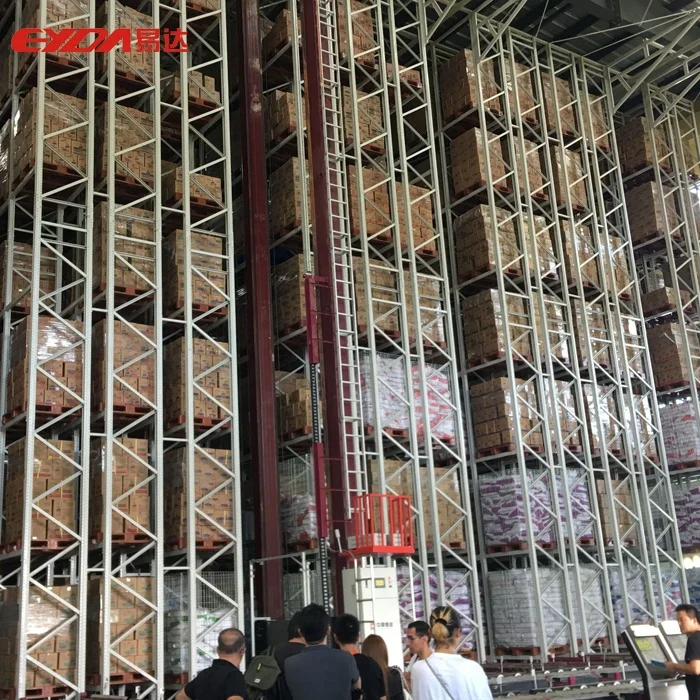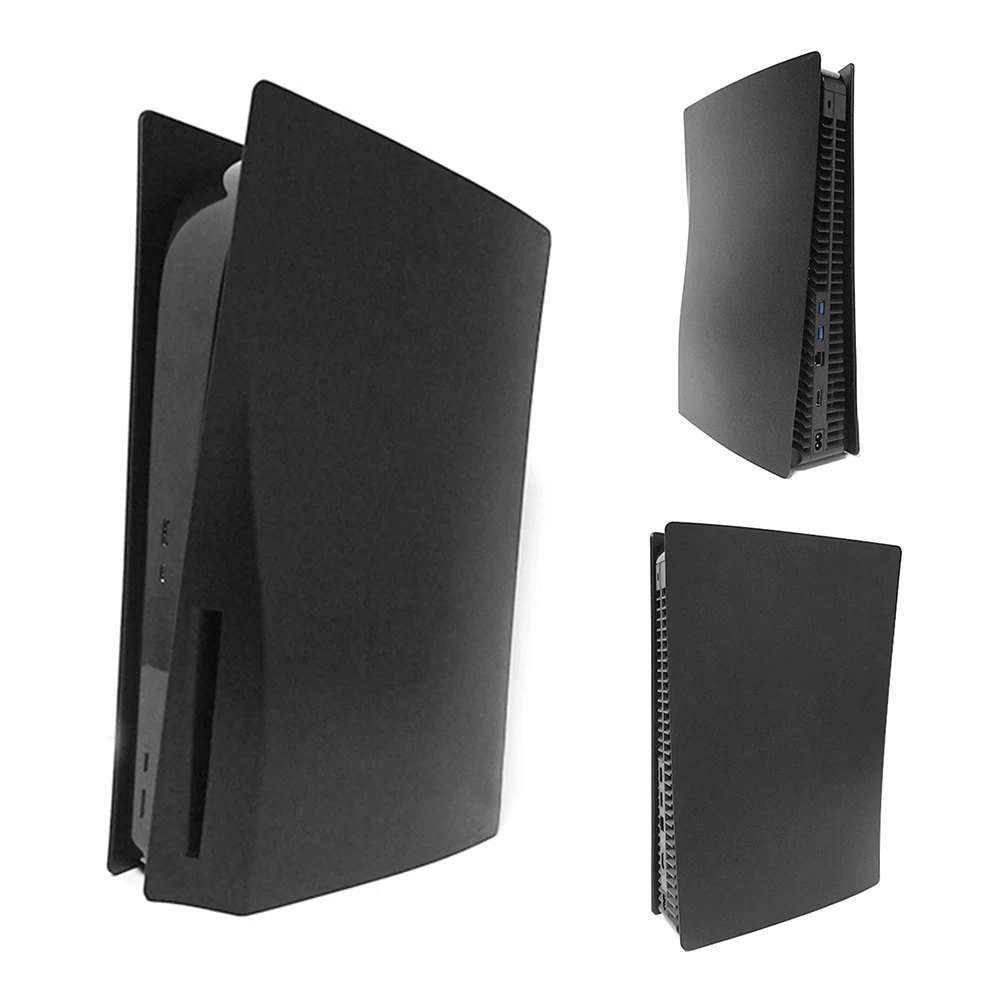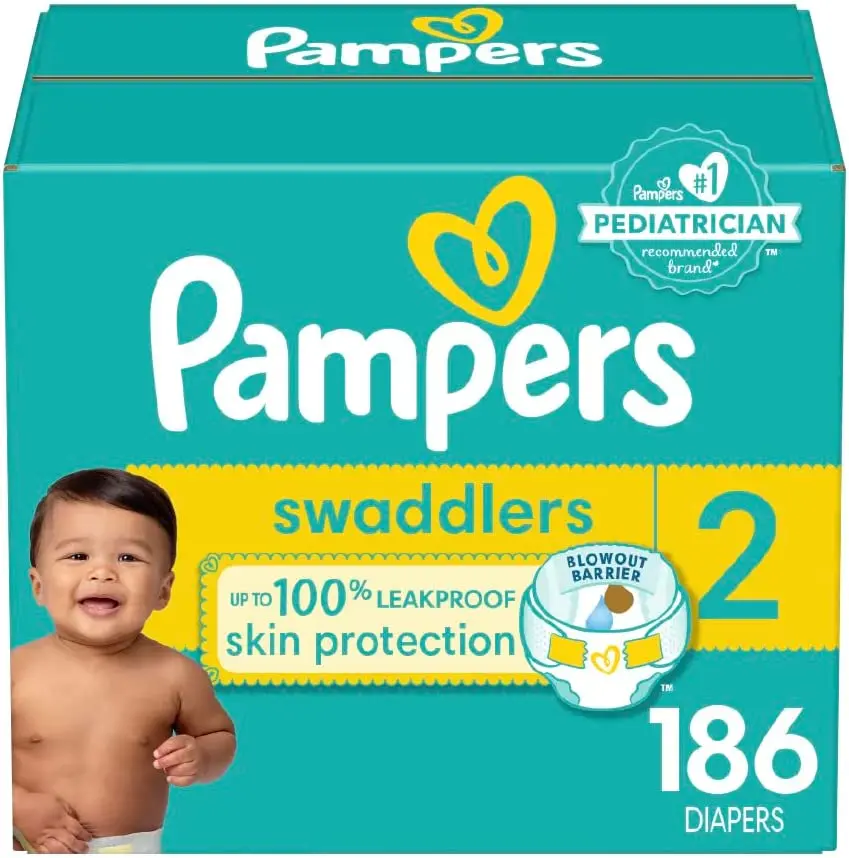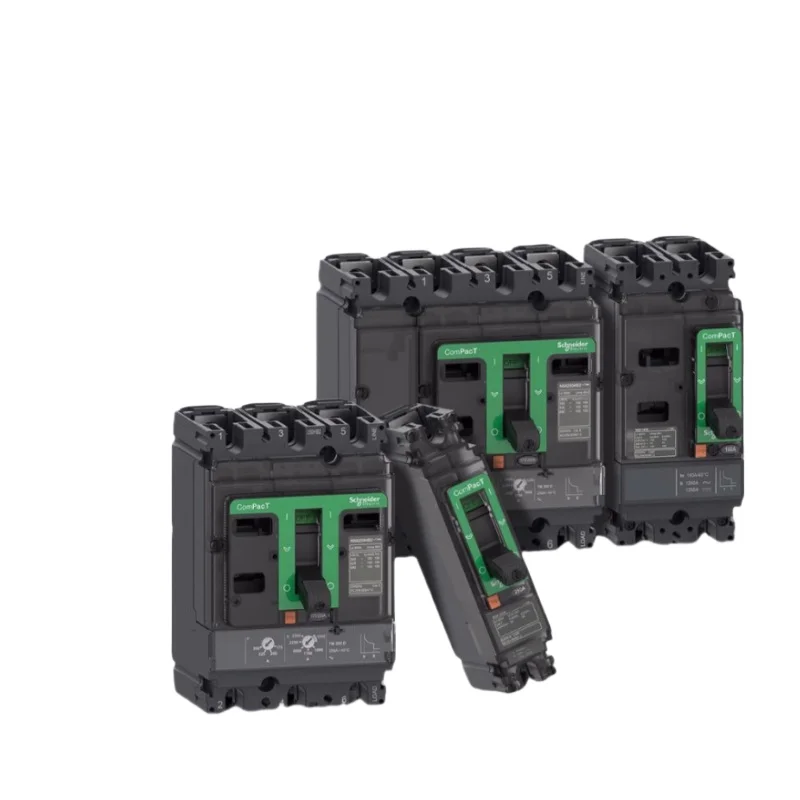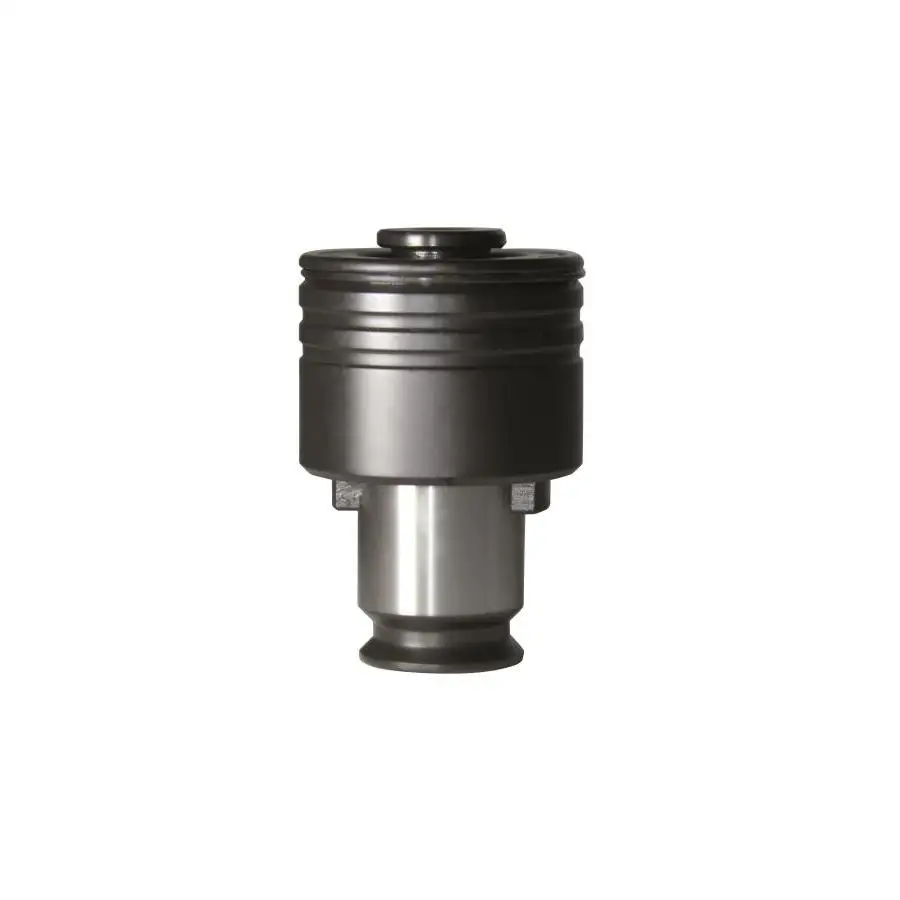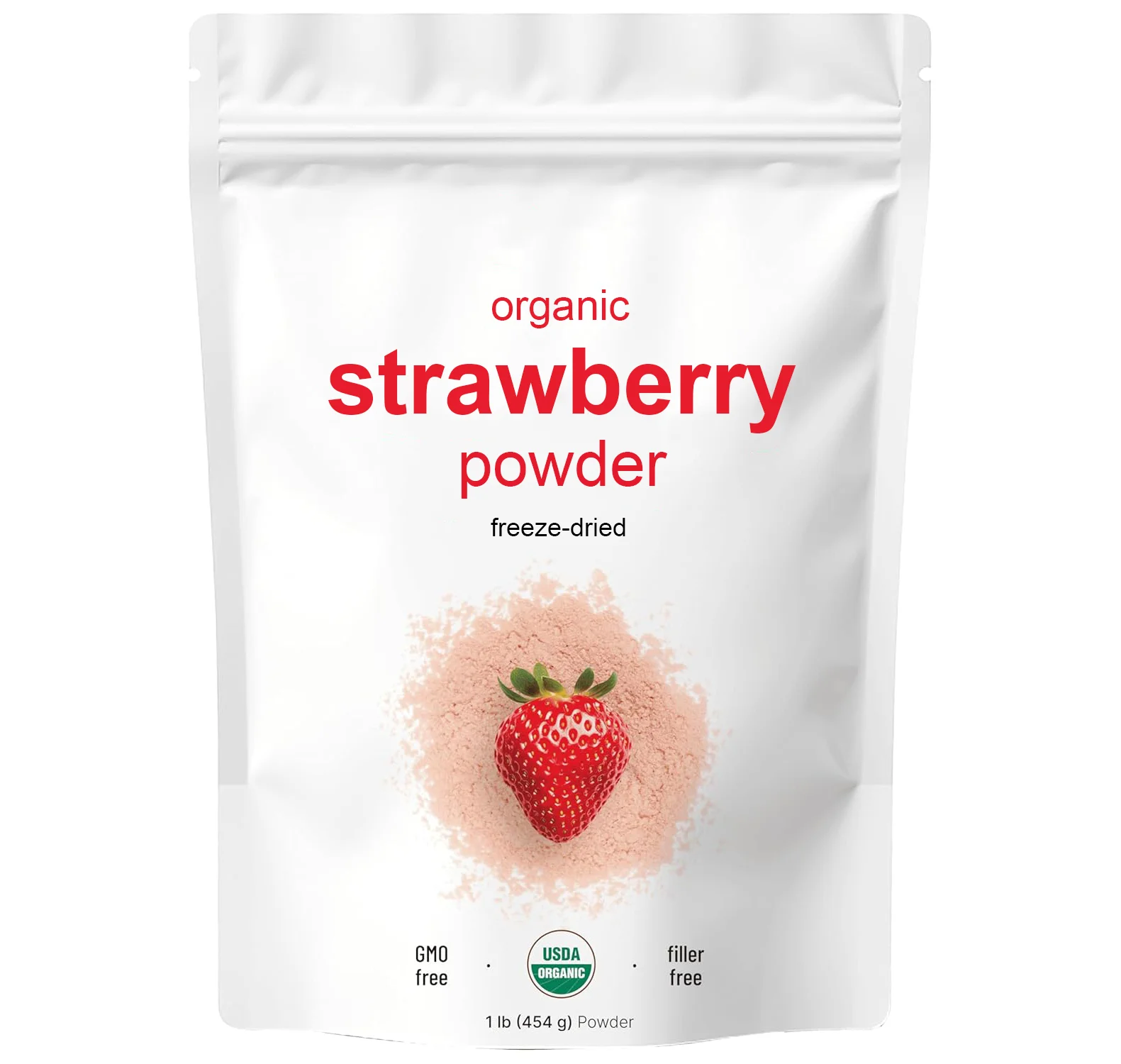Геосинтетический глиняный слой геотекстильный вкладыш GCL для свалки проект Горнодобывающий химический завод
- Категория: >>>
- Поставщик: Shandong Baotai Steel Co. Ltd.
Сохранить в закладки 1601225776057:
Описание и отзывы
Характеристики


Item | Item | ||||||
GCL-NP | GCL-OF | GCL-AH | |||||
Unit weight(g/m2) | ≥4000 | ≥4000 | ≥4000 | ||||
Bentionite swell index/ (mL/2g) | ≥24 | ≥24 | ≥24 | ||||
Ethylene blue adsorbed/(g/100g) | ≥30 | ≥30 | ≥30 | ||||
Tensile strength/(N/100mm) | ≥600 | ≥700 | ≥600 | ||||
Elongation at maximum load/% | ≥10 | ≥10 | ≥10 | ||||
Peel strenghth (N/100mm) | Nonwoven and woven geotextile | ≥40 | ≥40 | / | |||
PE membrane and nonwoven geotextile | / | ≥30 | / | ||||
Permeability/(m/s) | ≤5.0×10¹¹ | ≤5.0×10¹² | ≤5.0×10¹² | ||||
Hydrostatic pressure | 0.4Mpa,1h, no leakage | 0.4Mpa,1h, no leakage | 0.6Mpa,1h, no leakage | ||||
Filtrate loss/ mL | ≤18 | ≤18 | ≤18 | ||||
Bentionite compatibility/(ml/2g) | ≥20 | ≥20 | ≥20 | ||||











GCL: The blanket-like waterproof material is made of sodium bentonite as the main raw material, and is processed by needle punching, needle punching coating or adhesive method. Sodium bentonite is also called sodium montmorillonite. It can expand more than 24 times when it comes into contact with water and form a very stable colloidal waterproof layer through needle punching process. It has the characteristics of low filtration loss and high viscosity. It is a new, environmentally friendly and ecological waterproof membrane.
Sodium bentonite composite waterproof blanket (GCL) is a new type of geosynthetics. It is made of graded natural sodium bentonite particles and corresponding admixtures as raw materials. It is fixed between geotextile and plastic woven cloth through needle punching process and equipment to form a blanket-like waterproof membrane. Bentonite waterproof blanket has all the characteristics of geotechnical materials and excellent waterproof (seepage) performance.
The waterproof mechanism is: the sodium-based bentonite particles used in bentonite waterproof blankets can expand more than 24 times when exposed to water, forming a uniform colloidal system with high viscosity and low filtration loss. Under the restriction of two layers of geotextiles, the bentonite changes from disordered to orderly expansion. The result of continuous water absorption and expansion is that the bentonite layer itself becomes dense, thus having a waterproof effect.
Bentonite waterproof blankets can be divided into needle-punched sodium-based bentonite waterproof blankets, needle-punched film-coated sodium-based bentonite waterproof blankets, and adhesive sodium-based bentonite waterproof blankets according to theproduction process.
The needle-punched film-coated sodium-based bentonite waterproof blanket is a layer of high-density polyethylene geomembrane compounded on the outer surface of the non-woven geotextile of the needle-punched sodium-based bentonite waterproof blanket.
Adhesive sodium bentonite waterproof blanket is a sodium bentonite waterproof blanket produced by bonding bentonite particles to high-density polyethylene boards with adhesives and compressing them. As a new type of environmentally friendly ecological composite anti-seepage material, sodium bentonite waterproof blanket has been widely used in civil engineering such as water conservancy, environmental protection, transportation, railways, and civil aviation for its unique anti-seepage performance. Foundation treatment and capping of landfills, anti-seepage of artificial lakes, reservoirs, channels, rivers, roof gardens, anti-seepage of underground buildings such as basements, subways, tunnels, and underground passages.
Sodium bentonite composite waterproof blanket (GCL) is a new type of geosynthetics. It is made of graded natural sodium bentonite particles and corresponding admixtures as raw materials. It is fixed between geotextile and plastic woven cloth through needle punching process and equipment to form a blanket-like waterproof membrane. Bentonite waterproof blanket has all the characteristics of geotechnical materials and excellent waterproof (seepage) performance.
The waterproof mechanism is: the sodium-based bentonite particles used in bentonite waterproof blankets can expand more than 24 times when exposed to water, forming a uniform colloidal system with high viscosity and low filtration loss. Under the restriction of two layers of geotextiles, the bentonite changes from disordered to orderly expansion. The result of continuous water absorption and expansion is that the bentonite layer itself becomes dense, thus having a waterproof effect.
Bentonite waterproof blankets can be divided into needle-punched sodium-based bentonite waterproof blankets, needle-punched film-coated sodium-based bentonite waterproof blankets, and adhesive sodium-based bentonite waterproof blankets according to theproduction process.
The needle-punched film-coated sodium-based bentonite waterproof blanket is a layer of high-density polyethylene geomembrane compounded on the outer surface of the non-woven geotextile of the needle-punched sodium-based bentonite waterproof blanket.
Adhesive sodium bentonite waterproof blanket is a sodium bentonite waterproof blanket produced by bonding bentonite particles to high-density polyethylene boards with adhesives and compressing them. As a new type of environmentally friendly ecological composite anti-seepage material, sodium bentonite waterproof blanket has been widely used in civil engineering such as water conservancy, environmental protection, transportation, railways, and civil aviation for its unique anti-seepage performance. Foundation treatment and capping of landfills, anti-seepage of artificial lakes, reservoirs, channels, rivers, roof gardens, anti-seepage of underground buildings such as basements, subways, tunnels, and underground passages.

Composite geomembranes are widely used in channel anti-seepage projects. The extensive application and effectiveness of geosynthetics in civil engineering, especially in flood control and emergency projects, have attracted great attention from engineering and technical personnel. For the application technology of geosynthetics, the state has put forward normative technical requirements in terms of anti-seepage, anti-filtration, drainage, reinforcement, protection, etc., which has greatly accelerated the promotion and application of new materials. This material has been widely used in irrigation channel anti-seepage projects. Combined with construction practice, this paper briefly discusses the application technology of composite geomembranes.

Geotextile, also known as geotextile, is a permeable geosynthetic material made of synthetic fibers through needle punching or
weaving. Geotextile is one of the new geosynthetics. The finished product is in cloth shape, generally 4-6 meters wide and 50-100
meters long. Geotextiles are divided into woven geotextiles and non-woven filament geotextiles.
1. High strength. Due to the use of plastic fibers, it can maintain sufficient strength and elongation in dry and wet states.
2. Corrosion resistance. It can resist corrosion for a long time in soil and water with different pH values.
3. Good water permeability. There are gaps between the fibers, so it has good water permeability.
4. Good antimicrobial properties. It is not damaged by microorganisms and insects.
5. Convenient construction. Because the material is light and soft, it is convenient to transport, lay and construct.
6. Complete specifications: The width can reach 9 meters. It is the widest product in China, with a unit area mass of 100-1000g/m2
weaving. Geotextile is one of the new geosynthetics. The finished product is in cloth shape, generally 4-6 meters wide and 50-100
meters long. Geotextiles are divided into woven geotextiles and non-woven filament geotextiles.
1. High strength. Due to the use of plastic fibers, it can maintain sufficient strength and elongation in dry and wet states.
2. Corrosion resistance. It can resist corrosion for a long time in soil and water with different pH values.
3. Good water permeability. There are gaps between the fibers, so it has good water permeability.
4. Good antimicrobial properties. It is not damaged by microorganisms and insects.
5. Convenient construction. Because the material is light and soft, it is convenient to transport, lay and construct.
6. Complete specifications: The width can reach 9 meters. It is the widest product in China, with a unit area mass of 100-1000g/m2



Geomembrane liners, specifically those made from high-density polyethylene (HDPE) or reinforced polyethylene (RPE), offer superior performance compared to traditional liner options like clay or concrete. Their superiority stems from a range of advantageous properties, including their impermeability, durability, cost-effectiveness, and ease of installation.
1. Impermeability
One of the most important functions of any liner is to prevent leakage and seepage. HDPE and RPE geomembranes are engineered to be highly impermeable, creating a robust barrier against liquids and gases. Their low permeability rates are far superior to compacted clay liners, which are prone to cracking and shrinking over time. Concrete can also develop cracks due to temperature changes, chemical attack, or settling. In contrast, HDPE and RPE liners provide a continuous, seamless barrier.
2. Chemical Resistance
Both HDPE and RPE liners have excellent resistance to a broad range of chemicals, making them ideal for use in industrial waste containment, mining operations, and agricultural applications. They resist corrosion and degradation even in harsh environments. Conversely, clay can be eroded by certain chemicals, and concrete is susceptible to acid attack and sulfate damage.
3. Durability and Longevity
HDPE and RPE liners are known for their exceptional durability. They are UV-resistant and can withstand extreme temperatures, ensuring long-term stability even under harsh environmental conditions. Their flexibility allows them to adapt to ground movement and settling without cracking. In contrast, concrete and clay liners are more rigid and can crack under similar conditions, reducing their effectiveness over time.
4. Cost-Effectiveness
From a cost perspective, geomembrane liners offer a more economical solution than concrete. HDPE and RPE liners are lightweight, reducing transportation costs. They can also be prefabricated to specific dimensions, simplifying the installation process and minimizing labor costs. Clay and concrete liners typically require extensive site preparation and skilled labor, driving up costs.
5. Ease of Installation
Installing HDPE and RPE liners is relatively straightforward. They can be welded together to form large, continuous sheets with minimal seams, which reduces the risk of leakage. Installation is also quicker compared to laying concrete or compacting clay layers. This ease of installation translates into significant time savings, particularly for large projects.
1. Impermeability
One of the most important functions of any liner is to prevent leakage and seepage. HDPE and RPE geomembranes are engineered to be highly impermeable, creating a robust barrier against liquids and gases. Their low permeability rates are far superior to compacted clay liners, which are prone to cracking and shrinking over time. Concrete can also develop cracks due to temperature changes, chemical attack, or settling. In contrast, HDPE and RPE liners provide a continuous, seamless barrier.
2. Chemical Resistance
Both HDPE and RPE liners have excellent resistance to a broad range of chemicals, making them ideal for use in industrial waste containment, mining operations, and agricultural applications. They resist corrosion and degradation even in harsh environments. Conversely, clay can be eroded by certain chemicals, and concrete is susceptible to acid attack and sulfate damage.
3. Durability and Longevity
HDPE and RPE liners are known for their exceptional durability. They are UV-resistant and can withstand extreme temperatures, ensuring long-term stability even under harsh environmental conditions. Their flexibility allows them to adapt to ground movement and settling without cracking. In contrast, concrete and clay liners are more rigid and can crack under similar conditions, reducing their effectiveness over time.
4. Cost-Effectiveness
From a cost perspective, geomembrane liners offer a more economical solution than concrete. HDPE and RPE liners are lightweight, reducing transportation costs. They can also be prefabricated to specific dimensions, simplifying the installation process and minimizing labor costs. Clay and concrete liners typically require extensive site preparation and skilled labor, driving up costs.
5. Ease of Installation
Installing HDPE and RPE liners is relatively straightforward. They can be welded together to form large, continuous sheets with minimal seams, which reduces the risk of leakage. Installation is also quicker compared to laying concrete or compacting clay layers. This ease of installation translates into significant time savings, particularly for large projects.




1. Prevent leakage disposal in waste burying field or waste water or waste dregs disposing field
2. River ank, lake dam, mnine remaiings , reservoir, tunnel, liguid storage pool
3. Anti-leakage in subway, basement, tunnel
4. Anti-leakage in roadbed and other groundsill
The Horizontal direction laying of dam, the vertical direction laying for groundsill, used in the construction fence and waste
material firld
5. Used in seawater ir freswater feed field
6. Used in groundsill of road, highway, railway and waterproof layer of swelling clay and wet collapsed loess
7. Preventing leakage on rooftop
2. River ank, lake dam, mnine remaiings , reservoir, tunnel, liguid storage pool
3. Anti-leakage in subway, basement, tunnel
4. Anti-leakage in roadbed and other groundsill
The Horizontal direction laying of dam, the vertical direction laying for groundsill, used in the construction fence and waste
material firld
5. Used in seawater ir freswater feed field
6. Used in groundsill of road, highway, railway and waterproof layer of swelling clay and wet collapsed loess
7. Preventing leakage on rooftop




Geomembrane is a geotechnical anti-seepage material made of plastic film as the anti-seepage base material and non-woven fabric. The anti-seepage performance of the new material geomembrane mainly depends on the anti-seepage performance of the plastic film. The plastic films used for anti-seepage at home and abroad mainly include polyvinyl chloride (PVC), polyethylene (PE), EVA (ethylene/vinyl acetate copolymer), and ECB (ethylene vinyl acetate modified asphalt blended geomembrane) is also designed for use in tunnel applications. They are a kind of polymer chemical flexible material with a small specific gravity, strong elongation, high deformation adaptability, corrosion resistance, low temperature resistance, and good antifreeze performance.
Composite geomembranes are widely used in channel anti-seepage projects. The extensive application and effectiveness
ofgeosynthetics in civil engineering, especially in flood control and emergency projects, have attracted great attention from engineering and technical personnel. For the application technology of geosynthetics, the state has put forward normative technical requirements in terms of anti-seepage, anti-filtration, drainage, reinforcement, protection, etc., which has greatly accelerated the promotion and application of new materials. This material has been widely used in irrigation channel anti-seepage projects. Combined with construction practice, this paper briefly discusses the application technology of composite geomembranes.
GCL blanket-like waterproof material is made of sodium bentonite as the main raw material, through the needle punching method, needle punching film method or adhesive method. Sodium bentonite is also called sodium montmorillonite. It can expand more than 24 times when it comes into contact with water and form a very stable colloidal waterproof layer through the needle punching process. It has the characteristics of low filtration loss and high viscosity. It is a new, environmentally friendly and ecological waterproof membrane.
Geotextile, also known as geotextile, is a water-permeable geosynthetic material made of synthetic fibers through needle punching or weaving. Geotextile is one of the new geosynthetics. The finished product is in the shape of cloth, generally 4-6 meters wide and 50-100 meters long. Geotextile is divided into woven geotextile and non-woven filament geotextile.
Three-dimensional geotextile drainage board, tunnel drainage board, drainage board) is composed of a three-dimensional plastic net with a filter geotextile on one side and an anti-seepage geomembrane on the other side. It can replace the traditional sand and gravel layer and is mainly used for drainage of landfills, roadbeds and tunnel inner walls.
Rough surface HDPE geomembrane is a new type of anti-seepage material. Single rough surface and double rough surface HDPE geomembranes increase the friction coefficient and anti-slip function. They are more suitable for steep slope and vertical anti-seepage, and improve project stability.
Geocell is a three-dimensional mesh cell structure formed by high-strength welding of reinforced HDPE sheet materials. It is usually made by ultrasonic needle welding. Due to engineering needs, some holes are punched on the membrane.
PE pipe In China's municipal pipe market, plastic pipes are developing steadily. PE pipes, PP-R pipes, and UPVC pipes all have a place, among which the strong development momentum of PE pipes is the most eye-catching.
Composite geomembranes are widely used in channel anti-seepage projects. The extensive application and effectiveness
ofgeosynthetics in civil engineering, especially in flood control and emergency projects, have attracted great attention from engineering and technical personnel. For the application technology of geosynthetics, the state has put forward normative technical requirements in terms of anti-seepage, anti-filtration, drainage, reinforcement, protection, etc., which has greatly accelerated the promotion and application of new materials. This material has been widely used in irrigation channel anti-seepage projects. Combined with construction practice, this paper briefly discusses the application technology of composite geomembranes.
GCL blanket-like waterproof material is made of sodium bentonite as the main raw material, through the needle punching method, needle punching film method or adhesive method. Sodium bentonite is also called sodium montmorillonite. It can expand more than 24 times when it comes into contact with water and form a very stable colloidal waterproof layer through the needle punching process. It has the characteristics of low filtration loss and high viscosity. It is a new, environmentally friendly and ecological waterproof membrane.
Geotextile, also known as geotextile, is a water-permeable geosynthetic material made of synthetic fibers through needle punching or weaving. Geotextile is one of the new geosynthetics. The finished product is in the shape of cloth, generally 4-6 meters wide and 50-100 meters long. Geotextile is divided into woven geotextile and non-woven filament geotextile.
Three-dimensional geotextile drainage board, tunnel drainage board, drainage board) is composed of a three-dimensional plastic net with a filter geotextile on one side and an anti-seepage geomembrane on the other side. It can replace the traditional sand and gravel layer and is mainly used for drainage of landfills, roadbeds and tunnel inner walls.
Rough surface HDPE geomembrane is a new type of anti-seepage material. Single rough surface and double rough surface HDPE geomembranes increase the friction coefficient and anti-slip function. They are more suitable for steep slope and vertical anti-seepage, and improve project stability.
Geocell is a three-dimensional mesh cell structure formed by high-strength welding of reinforced HDPE sheet materials. It is usually made by ultrasonic needle welding. Due to engineering needs, some holes are punched on the membrane.
PE pipe In China's municipal pipe market, plastic pipes are developing steadily. PE pipes, PP-R pipes, and UPVC pipes all have a place, among which the strong development momentum of PE pipes is the most eye-catching.

Q1: What is your MOQ?
A: Usually our MOQ is one container, but it is different for some items, please contact us for details.
Q2:What is your terms of payment?
A:We usually accept T/T in advance, L/C for large sum.If you prefer other payments terms, please discuss.
Q3:What is your delivery time?
A:For products in stock, we can ship it within 7 days after receiving the deposit. For custom order, production time is 15-30
workdays after received the deposit.
Q4:How could you guarantee your products?
A:Mill Test Certification is supplied with shipment, We also accept and support the third-party inspection.We also could issue the
warranty to customer to guarantee the quality.
Q5: Will all costs be clear?
A:Our quotation is easy to understand and will not incur any additional costs.
A: Usually our MOQ is one container, but it is different for some items, please contact us for details.
Q2:What is your terms of payment?
A:We usually accept T/T in advance, L/C for large sum.If you prefer other payments terms, please discuss.
Q3:What is your delivery time?
A:For products in stock, we can ship it within 7 days after receiving the deposit. For custom order, production time is 15-30
workdays after received the deposit.
Q4:How could you guarantee your products?
A:Mill Test Certification is supplied with shipment, We also accept and support the third-party inspection.We also could issue the
warranty to customer to guarantee the quality.
Q5: Will all costs be clear?
A:Our quotation is easy to understand and will not incur any additional costs.
Похожие товары
Поставка поставщика, бордюр из песчаника, дренажная канава, полимерный бетон, бордюр
3 058,74 ₽ - 3 313,64 ₽
Гравийная сетка для парковки, пластиковые изделия для земляных работ
116,65 ₽ - 129,61 ₽
2x1x1 м, 50x100 мм, оцинкованная сварная габионная коробка, 1x1x1m, гальфан Znal проволока 50x50 мм, 2x2 дюйма, ячеистая сетка, габион
20,79 ₽ - 60,17 ₽
Трехмерный составной геонет для дренажа/дренажа трехмерный композитный геонет
Пластиковая решетка для газона для стабилизации заземления
Игровая площадка для футбольного поля, поле для гольфа, дождевой воды, водопоглощающий модуль для парковки
4 156,95 ₽ - 5 469,67 ₽
Пластиковый коврик для газонной брусчатки для дорожных гравийных земляных работ
152,06 ₽ - 283,33 ₽
Новые поступления
Новинки товаров от производителей по оптовым ценам
Светлая Золотая морская солнечная энергия ландшафтное украшение постмодерн минималистский стиль чистая ручная роспись маслом 24x3 1 дюйм/60x80
35-53 $
Европейские антикварные простой Последние двойной металлической кровати
Автоматизированная складская система автоматического хранения в Гуанчжоу Eyda с эффективными стеллажами и
10 000-35 000 $
Декоративный чехол для PS5 Сменный Чехол консоли пластины Playstation5 пылезащитный с защитой от царапин
7,50-7,70 $
Лучшее качество детские подгузники для сухих подгузников новорожденных размер 2 4 и большие доставка или
3 $
Выключатель для формованного корпуса Schneider NSX100N 50KA AC 3P3D 25A TMD новая модель C10N3TM025
Буф2-.. М .. Краны
Оптовая продажа высококачественный сублимированный клубничный порошок Заводская поставка
5,50-6,40 $
